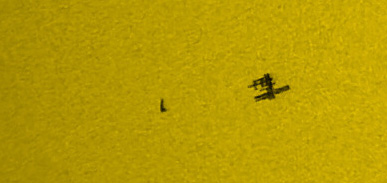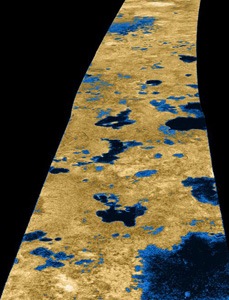Pages: << 1 ... 7 8 9 10 ...11 ...12 13 14 ...15 ...16 17 18 >>
2007/08/16
Amazing Images of the Saturnian System
from: http://ciclops.org/index.php
The beautiful Cassini Probe Imaging:
The Top Ten Astronomy Images of 2006
from http://www.badastronomy.com/bablog/2006/12/27/the-top-ten-astronomy-images-of-2006/
Some very nice images:
ORNL team discovers new way to spin up pulsars
From: http://www.ornl.gov/info/press_releases/get_press_release.cfm?ReleaseNumber=mr20070105-00
OAK RIDGE, Tenn., Jan. 5, 2007 — A team of scientists using Oak Ridge National Laboratory supercomputers has discovered the first plausible explanation for a pulsar's spin that fits the observations made by astronomers. Anthony Mezzacappa of the Department of Energy lab's Physics Division and John Blondin of North Carolina State University explain their results in the Jan. 4 issue of the journal Nature. According to three-dimensional simulations they performed at the Leadership Computing Facility, located at ORNL, the spin of a pulsar is determined not by the spin of the original star, but by the shock wave created when the star's massive iron core collapses.
This visualization shows the progression of spiral formation in a supernova, which eventually results in a pulsar's spin. The darkest portion of the accretion shock denotes the front edge of the wave as it rotates around the supernova's center. Three-dimensional computer models are the only models that show this effect. This 3D model of pulsar formation was performed at DOE's Leadership Computing Facility at Oak Ridge National Laboratory.
Titan's Liquid Methane Lakes
from: http://saturn.jpl.nasa.gov/multimedia/images/image-details.cfm?imageID=2432
The existence of oceans or lakes of liquid methane on Saturn's moon Titan was predicted more than 20 years ago. But with a dense haze preventing a closer look it has not been possible to confirm their presence. Until the Cassini flyby of July 22, 2006, that is.
Radar imaging data from the flyby, published this week in the journal Nature, provide convincing evidence for large bodies of liquid. This image, used on the journal's cover, gives a taste of what Cassini saw. Intensity in this colorized image is proportional to how much radar brightness is returned, or more specifically, the logarithm of the radar backscatter cross-section. The colors are not a representation of what the human eye would see.
The lakes, darker than the surrounding terrain, are emphasized here by tinting regions of low backscatter in blue. Radar-brighter regions are shown in tan. The strip of radar imagery is foreshortened to simulate an oblique view of the highest latitude region, seen from a point to its west.
Mira and Her Tail
from http://www.nasa.gov/mission_pages/galex/20070815/a.html:
A new ultraviolet mosaic from NASA's Galaxy Evolution Explorer shows a speeding star that is leaving an enormous trail of "seeds" for new solar systems. The star, named Mira (pronounced my-rah) after the latin word for "wonderful," is shedding material that will be recycled into new stars, planets and possibly even life as it hurls through our galaxy.




